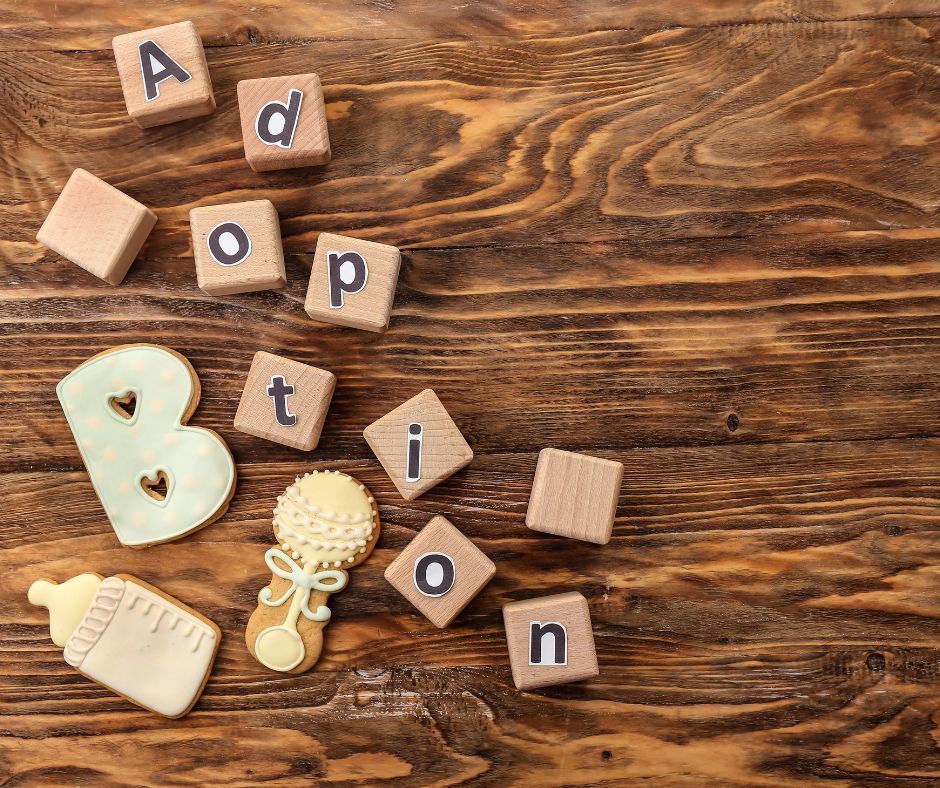The language we use is extremely important and can have a big impact. There are many outdated and negative terms still being used. Using positive adoption language is a way to honor and support a birthmother’s brave and loving decision, affirm an adoptive family’s role, and communicate pride rather than shame about a child’s adoption story.
Inclusive adoption language empowers individuals to select language that resonates with their experiences, making it a more neutral and respectful option.
Using positive adoption language helps foster understanding and appreciation for the adoption experience!
Words can shape our attitudes and perspectives on topics. The power of language has a profound effect not only on us but also on how we interact with others. How we choose to communicate is an important factor that impacts our world.
For many years, it was not only normal but acceptable to think an adoptive family isn’t a real family – which couldn’t be further from the truth. What once was just discussed in hushed tones or behind closed doors is now very common. Adoption should never have been needed to be brushed under the rug or glossed over in conversation. Now that we undoubtedly know and recognize adoptive families as just as legitimate as “traditional families,” we need to examine more closely how we speak about adoption. To honor those who go through the adoption process, they deserve more than the stigmatism that lessens their story.

What is Positive Adoption Language?
Even though the process of adoption has taken a more modern approach to acceptance, there is still an unfortunate stigma that lingers. That’s why it’s so crucial to use Positive Adoption Language. Words and phrases used by those involved with adoptions can help create more understanding and empathy for all families touched by adoption.
Positive adoption language serves to shed light on these unintended stigmatizing statements and offers alternatives for people to approach adoption conversations more empathetically. Honest adoption language has emerged to convey the complexities of being adopted, acknowledging the emotional aspects such as grief and loss.

Here are a few examples of what is NEGATIVE LANGUAGE, POSITIVE LANGUAGE, and WHY?
The Negative Language:
· “Giving up your baby”
The Positive Language:
-
Placing your child/baby for adoption
-
Making an adoption plan
-
Choosing adoption
The Why:
-
People “give up” bad habits. Making an adoption plan requires an immense amount of thought, love, and courage. She is giving love, giving life, and not giving up. She is choosing not to parent and be supported for her brave choice.
-
A child needs to hear they are embraced by a wonderful family who has always wanted them.
-
The birth parents made a loving decision to ensure the child has the best opportunities
The Negative Language:
-
“The Real Parents”
The Positive Language:
-
Birth Mother / Birth Father
The Why:
-
Both birth parents and adoptive parents are the child’s “parents” in their unique way.
-
The unintended consequences of this choice of words can reinforce negative stereotypes about adoption, saying that the birth parents are the real parents, not the adoptive parents.
The Negative Language:
-
“Deciding to keep her baby”
The Positive Language:
-
Deciding to parent her child/baby
The Why:
-
Using language like “keeping her baby” implies her child is a possession to be kept or given away. Choosing to parent her child is well within her right to choose and is a choice she should feel empowered to make.
The Negative Language:
-
“Giving up your baby”
The Positive Language:
-
Placing your child/baby for adoption
-
Making an adoption plan
-
Choosing adoption
The Why:
-
People “give up” bad habits. Making an adoption plan requires an immense amount of thought, love, and courage. She is giving love, giving life, and not giving up. She is choosing not to parent and be supported for her brave choice.
-
A child needs to hear they are embraced by a wonderful family who has always wanted them.
-
The birth parents made a loving decision to ensure the child has the best opportunities
The Negative Language:
-
“The Real Parents”
The Positive Language:
-
Birth Mother / Birth Father
The Why:
-
Both birth parents and adoptive parents are the child’s “parents” in their unique way.
-
The unintended consequences of this choice of words can reinforce negative stereotypes about adoption, saying that the birth parents are the real parents, not the adoptive parents.
The Negative Language:
-
“Deciding to keep her baby”
The Positive Language:
-
Deciding to parent her child/baby
The Why:
-
Using language like “keeping her baby” implies her child is a possession to be kept or given away. Choosing to parent her child is well within her right to choose and is a choice she should feel empowered to make.
The Negative Language:
-
“Giving up your baby”
The Positive Language:
-
Placing your child/baby for adoption
-
Making an adoption plan
-
Choosing adoption
The Why:
-
People “give up” bad habits. Making an adoption plan requires an immense amount of thought, love, and courage. She is giving love, giving life, and not giving up. She is choosing not to parent and be supported for her brave choice.
-
A child needs to hear they are embraced by a wonderful family who has always wanted them.
-
The birth parents made a loving decision to ensure the child has the best opportunities
The Negative Language:
-
“The Real Parents”
The Positive Language:
-
Birth Mother / Birth Father
The Why:
-
Both birth parents and adoptive parents are the child’s “parents” in their unique way.
-
The unintended consequences of this choice of words can reinforce negative stereotypes about adoption, saying that the birth parents are the real parents, not the adoptive parents.
The Negative Language:
-
“Deciding to keep her baby”
The Positive Language:
-
Deciding to parent her child/baby
The Why:
-
Using language like “keeping her baby” implies her child is a possession to be kept or given away. Choosing to parent her child is well within her right to choose and is a choice she should feel empowered to make.

Why Positive Adoption Language Matters
Positive adoption language isn’t just beneficial for others, it can also be beneficial for adoptees as it promotes a positive self-image from a young age by using respectful language. Using positive adoption language helps show respect and kindness to all the special people touched by adoption. Respectful adoption language plays a crucial role in redefining terms to be more appealing and less offensive, ensuring that all parties involved feel respected.
Adoptive parents, birth parents, and most importantly, children should feel safe, loved, and respected when discussing adoption. Positive adoption language honors the unique bond of each family affected by adoption while raising positive awareness of the positive experiences many have had through adoption.
The Role of Adoptive Parents in Promoting Positive Adoption Language
As adoptive parents, it is essential to promote positive adoption language to create a supportive and inclusive environment for all members of the adoption community. By using respectful and considerate language, adoptive parents can help break down stigmas and promote a more positive narrative around adoption.
Modeling Respectful Language
Adoptive parents can model respectful language by using terms such as “birth parent,” “birth mother,” and “birth father” instead of “real parent” or “natural parent.” They can also use inclusive language, such as “adopted child” or “adoptive family,” instead of “child in need” or “foster child.” By using positive adoption language, adoptive parents can show respect for the birth parents and the adoption process, and promote a positive and respectful attitude towards adoption.
The Impact of Language on the Adoption Experience
The language used to describe adoption can have a significant impact on the adoption experience. Negative adoption language can perpetuate stigmas and create a negative narrative around adoption, while positive adoption language can promote a more positive and inclusive environment.
Effects on Adopted Children and Birth Parents
Negative adoption language can be hurtful and damaging to adopted children and birth parents. Terms such as “given up for adoption” or “real parents” can imply that the birth parents did not care about their child or that the adoptive parents are not the “real” parents. This can lead to feelings of guilt, shame, and low self-esteem in adopted children and birth parents. On the other hand, positive adoption language can promote a sense of pride and self-worth in adopted children and birth parents.
Creating a Positive Adoption Culture
Creating a positive adoption culture requires a collective effort from all parties involved in the adoption process. By promoting positive adoption language and respectful communication, we can create a more inclusive and supportive environment for all members of the adoption community.
The Power of Language in Shaping Culture
Language has the power to shape culture and influence our perceptions and attitudes towards adoption. By using positive adoption language, we can promote a more positive and respectful attitude toward adoption and create a more inclusive environment for all members of the adoption community. Support organizations, such as AdoptHelp, have developed to provide resources and guidance for those affected by adoption and to promote positive adoption language.






